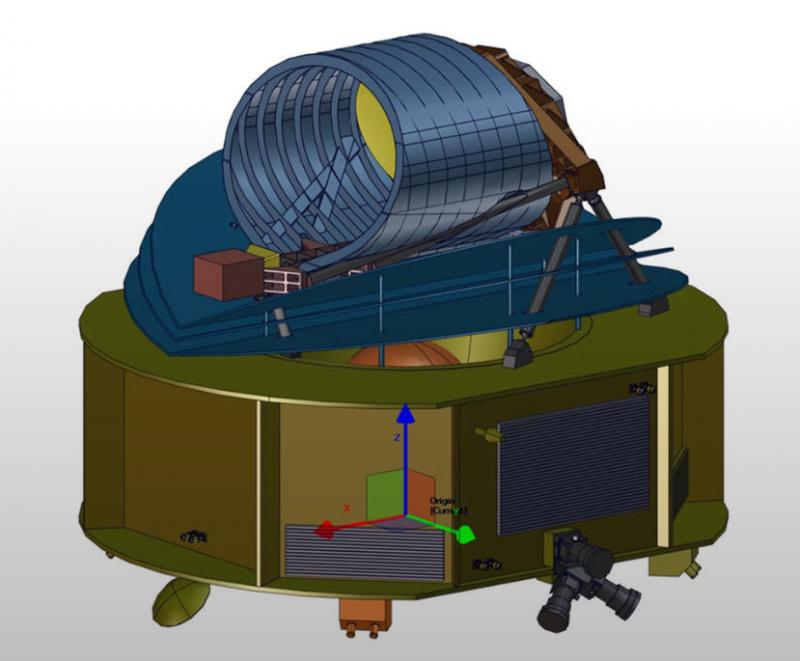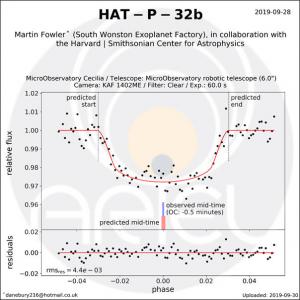2020 January 16
The quest for ET (Exoplanet Transits not Extra-Terrestrials that is)
The Exoplanets Division of the Asteroid and Remote Planets Section is collaborating with other amateurs and professional astronomers to provide ground-based observations of exoplanet transits in support of the Atmospheric Remote-Sensing Infrared Exoplanet Large survey, ARIEL, Space Mission.
ARIEL is an ESA mission and is scheduled to launch in 2028 with a lifetime of 4 years. It will carry a 1 metre telescope and spectrograph to cover wavelengths between 0.5 and 7.8 µm. It will, using transit spectroscopy, observe approximately 1000 exoplanets to determine the make-up of their atmospheres, how they may have been formed and how they are changing.

ARIEL spacecraft
Some of these exoplanets will not have been observed for several years and therefore predicted transit times could be in error and thus missed by ARIEL when imaging that particular event – hence the ExoClock project. An overview of the project can be viewed here. Presentations given at the ARPS meeting at Clanfield on 2019 September 29 can be linked to from there;
– The ExoClock Project by Anastasia Kokori
– An Introduction to Astrobiology by Peta Bosley
Full details are available in ‘ARIEL Space Mission, The ExoClock Project’ here
Just in case you are wondering why astrobiology features here I will refer you to the late Sir Stephen Hawking “There is no bigger question in science than the search for extra-terrestrial life”. Exoplanet research is moving from the detection of exoplanets to their characterisation which might just leave some room for amateurs to pursue the former.
ARIEL Spacecraft
To assist observers 20 high and medium priority targets are listed in the above-mentioned document together with target data, finder charts, comparison stars and transit times for 2020 suitable for 6” or 8” reflectors. Observers can also input their own specific requirements into the ExoWorlds Spies Transit Scheduler at https://www.exoworldsspies.com/en/scheduler/
You don’t have to own your own telescope to participate. BAA member Martin Fowler used the MicroObservatory robotic telescope to obtain a light-curve of HAT-P-32b. This and other transit light curves can be viewed at https://www.exoclock.space/database/observations

Exoplanet transit light curve by Martin Fowler
Please visit the ARPS Exoplanet Division website for all matters exoplanetary
Roger Dymock
ARPS Assistant Director Exoplanets
| The British Astronomical Association supports amateur astronomers around the UK and the rest of the world. Find out more about the BAA or join us. |
